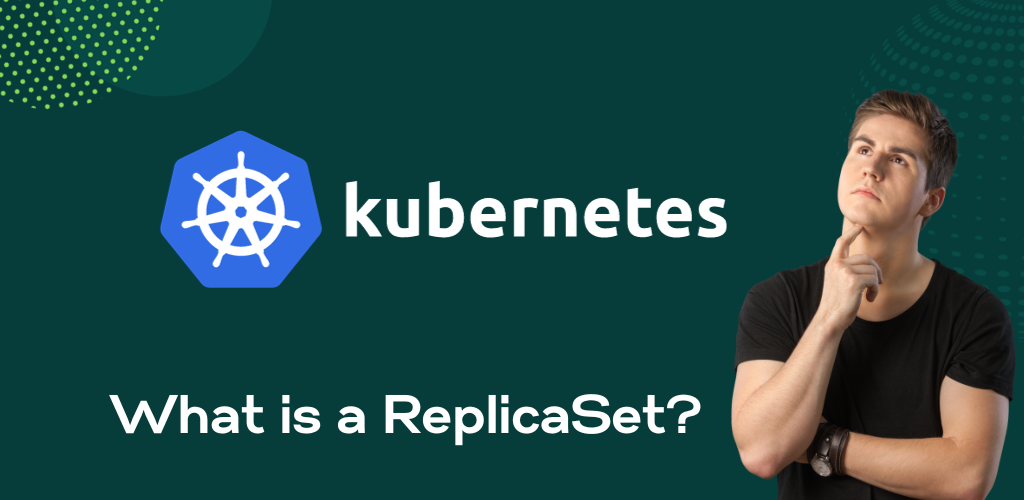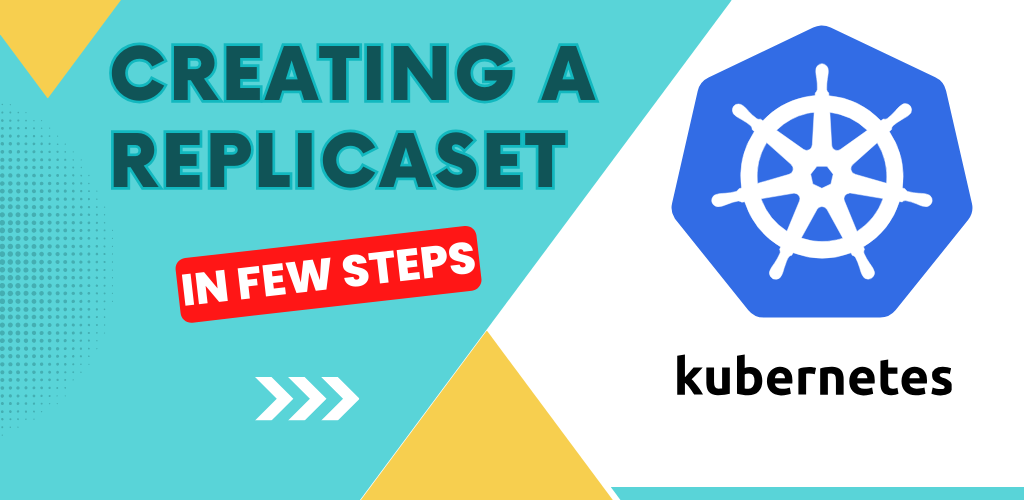Kubernetes, the popular container orchestration platform, offers an array of tools and controllers for managing containerized applications. Among these, ReplicaSets play a crucial role in ensuring the high availability and scalability of your applications. In this comprehensive guide, we will delve into the intricacies of ReplicaSets, covering their creation, management, and troubleshooting. By the end of this article, you will have a deep understanding of how ReplicaSets function within a Kubernetes environment.
Introduction
ReplicaSets are an essential part of Kubernetes, serving as a type of Kubernetes controller. These controllers are responsible for maintaining the desired state of your applications. ReplicaSets, in particular, are in charge of ensuring that a specified number of replica Pods are running at all times. In this context, a Pod is the smallest deployable unit in Kubernetes, typically hosting one or more containers. ReplicaSets automates the process of Pod management, making applications highly available and resilient.
What is a ReplicaSet?

A ReplicaSet is a Kubernetes controller that acts as an abstraction layer above Pods. It defines the desired number of replica Pods and ensures that this desired state is always maintained. If a Pod fails or is terminated, the ReplicaSet automatically replaces it, keeping the required number of replicas intact. This feature is invaluable for applications that need to remain operational despite failures.
Why Use a ReplicaSet?
ReplicaSets are beneficial for a variety of scenarios, including:
- High Availability: Ensuring that your application is always accessible, even when some Pods fail.
- Scaling: Dynamically adjusting the number of Pods to accommodate changes in traffic or workload.
- Rolling Updates: Facilitating safe and controlled updates to your application without downtime.
Benefits of Using a ReplicaSet
Utilizing a ReplicaSet in your Kubernetes deployment offers several advantages:
- High Availability: By automatically replacing failed Pods, ReplicaSets increases the availability of your application.
- Fault Tolerance: If a Pod experiences issues, the ReplicaSet swiftly replaces it, maintaining the desired replica count.
- Scalability: Easily scale your application up or down by modifying the number of replicas in the ReplicaSet.
- Rolling Updates: Perform updates without service interruptions, as ReplicaSets manages the transition from old to new Pods gracefully.
Now that we’ve established the importance of ReplicaSets, let’s explore how to create and manage them effectively within your Kubernetes cluster.
Creating a ReplicaSet

Writing a ReplicaSet Manifest
To create a ReplicaSet, you must define its desired state within a ReplicaSet manifest. This manifest, written in YAML or JSON, specifies the configuration of your ReplicaSet. Let’s break down the key components of a ReplicaSet manifest:
- apiVersion: This field specifies the version of the Kubernetes API you are using.
- kind: Set this field to “ReplicaSet” to indicate that you are defining a ReplicaSet resource.
- metadata: The metadata section includes a name for your ReplicaSet and optional labels that help you categorize and organize resources.
- spec: This is the most crucial section, where you define the desired state of your ReplicaSet, including:
- replicas: The number of replica Pods you wish to maintain.
- selector: A label selector that identifies which Pods the ReplicaSet should manage.
- template: Describes the Pod template, including the container image, labels, and other specifications.
Here’s an example of a more complex ReplicaSet manifest:
yaml
apiVersion: apps/v1 kind: ReplicaSet metadata: name: my-replicaset spec: replicas: 3 selector: matchLabels: app: my-app template: metadata: labels: app: my-app spec: containers: - name: my-container image: my-image:latest resources: limits: memory: "256Mi" cpu: "200m" requests: memory: "128Mi" cpu: "100m" - name: sidecar-container image: sidecar-image:latest
In this more complex example, we have included resource requests and limits for the main container, as well as an additional sidecar container. These resource constraints help Kubernetes schedule Pods more effectively and prevent resource conflicts.
Submitting the ReplicaSet Manifest to Kubernetes
After creating your ReplicaSet manifest, you can deploy it to your Kubernetes cluster using the kubectl command-line tool. Save the manifest to a file (e.g., my-replicaset.yaml) and apply it as follows:
shell
kubectl apply -f my-replicaset.yaml
Kubernetes will read the manifest and create the ReplicaSet, aligning it with the specified desired state.
Verifying that the ReplicaSet has Been Created
To confirm the successful creation of your ReplicaSet, use the following kubectl command:
shell
kubectl get replicaset
This command lists all the ReplicaSets in your cluster, and you should see your newly created ReplicaSet in the output. Additionally, you can retrieve detailed information about your ReplicaSet:
shell
kubectl describe replicaset my-replicaset
This command provides comprehensive information about your ReplicaSet, including its replicas, selector, and events.
Managing a ReplicaSet
Scaling a ReplicaSet
One of the primary advantages of ReplicaSets is their ability to scale the number of replica Pods dynamically. If your application experiences increased traffic or workload, you can easily scale up your ReplicaSet. Use the kubectl scale command for this purpose. For instance, to scale your “my-replicaset” to five replicas, run:
shell
kubectl scale --replicas=5 replicaset my-replicaset
The ReplicaSet will then handle the creation of additional Pods to meet the new desired state.
Updating a ReplicaSet
Applications frequently require updates, whether they involve a new code version, configuration changes, or other adjustments. Kubernetes provides the means to perform updates on your ReplicaSet smoothly and without service interruptions. To update a ReplicaSet, you can use the kubectl edit command to modify the ReplicaSet manifest. For example:
shell
kubectl edit replicaset my-replicaset
This command opens the manifest in your default text editor. Make the necessary changes, save the file, and exit the editor. Kubernetes will detect the changes and initiate rolling updates to your Pods.
For more controlled updates, use the kubectl set image command to change the container image:
shell
kubectl set image replicaset/my-replicaset my-container=my-new-image:latest
This command updates the “my-container” image in your ReplicaSet. Kubernetes ensures that the update occurs gradually, avoiding any downtime.
Different Types of Rolling Updates
During rolling updates, it is essential to understand the various strategies available:
- Recreate Strategy: In this strategy, Kubernetes terminates all old Pods before creating new ones. This can lead to temporary service disruption but ensures a clean transition.
- Rolling Update Strategy: Kubernetes replaces Pods incrementally, one at a time, ensuring zero downtime during the update. This is the default strategy.
- Blue-Green Deployment: This strategy involves creating a completely new set of Pods (Blue) while keeping the old ones (Green) intact. Once the Blue Pods are tested and ready, traffic is switched to them.
Choose the strategy that best suits your application’s requirements.
Pause and Resume Rolling Updates
During a rolling update, you can use kubectl rollout pause and kubectl rollout resume commands to control the update process. Pausing an update allows you to investigate any issues or make manual adjustments before resuming the update.
Deleting a ReplicaSet
When you no longer need a ReplicaSet, you can delete it using the kubectl delete command:
shell
kubectl delete replicaset my-replicaset
This command not only removes the ReplicaSet but also its associated Pods. Be cautious when deleting ReplicaSets in production, as it will affect the availability of your application.
Troubleshooting
Additional Common Problems and Solutions
In addition to the common issues mentioned earlier, you may encounter the following problems when working with ReplicaSets:
- Pods Stuck in the Terminating State: Sometimes, Pods can get stuck in the Terminating state, preventing new Pods from being created. Investigate the issue by checking for issues with finalizers or resource constraints.
- ReplicaSets Not Scaling Down Properly: If your ReplicaSet is not scaling down as expected, it may be due to issues with resource constraints, such as resource requests and limits. Ensure your resources are correctly configured to allow Pods to be terminated when no longer needed.
- Handling Pods with Multiple Containers: In more complex scenarios, Pods within a ReplicaSet may consist of multiple containers. Managing resource constraints, lifecycle, and communication between these containers requires careful consideration and configuration.
- Monitoring and Metrics: It is essential to implement monitoring and metrics to keep an eye on the health and performance of your ReplicaSets and their associated Pods. Tools like Prometheus and Grafana can be instrumental in this regard.
Read also: Tips Design Concept: How to Initiate the Design Concept Creation?
Conclusion
ReplicaSets are a vital component of Kubernetes, offering high availability and scalability to your applications. By maintaining a specified number of replica Pods, they ensure that your services remain accessible, even in the face of Pod failures. Whether you are managing a simple web application or a complex microservices architecture, understanding how to create and manage ReplicaSets is crucial for maintaining a reliable and robust Kubernetes deployment.
In this comprehensive guide, we’ve covered the fundamentals of creating a ReplicaSet, managing its lifecycle, and troubleshooting common issues. By following best practices and harnessing the power of Kubernetes, you can create resilient and highly available applications that can adapt to changing workloads and requirements.
For more in-depth information, advanced use cases, and expert insights, we recommend exploring the official Kubernetes documentation and actively engaging with the thriving Kubernetes community. Staying updated on the latest best practices and techniques for managing your ReplicaSets in production environments is essential for the continued success of your Kubernetes deployments.

